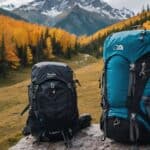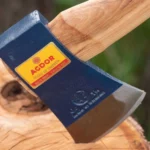Creating a Sustainable Prepper Homestead from Scratch involves building a self-reliant, eco-friendly farm. This type of homestead uses renewable energy and grows its own food to support a family on 2 to 5 acres of land.
Starting such a homestead can cost about $250,000 at first, with yearly costs around $20,000. Key things to think about include water access, safety, being close to schools and community interaction.
Skills like preserving food through canning or smoking, growing plants in a garden, fixing things around the house, and finding wild food are essential for this lifestyle. Making sure there’s enough food means raising animals and planting crops that give lots of produce.
Composting helps make soil better for gardening without waste. Having friends nearby who also homestead is great for trading items or help when needed. Starting small—maybe with just some indoor plants or a few chickens—and then doing more over time is smart.
Permaculture design and using solar power are part of making the homestead last long into the future.
Read on to learn how!
Table of Contents
Understanding Homesteading
Homesteading is about living a self-sufficient life. It means farming on a small scale, making your own food, and using renewable energy sources like solar panels and wind turbines.
People who live this way work hard to grow crops, raise animals, and preserve food through methods like canning and pickling. They aim to reduce their need for things from stores by producing most of what they need on their own land.
This lifestyle also involves learning many skills. For example, homesteaders often build their own homes or shelters and fix things without calling for outside help. They use water carefully, maybe by collecting rainwater or recycling used water for plants.
Living off the grid—without depending on public utilities—is a big part of this life too. Homesteaders believe in taking care of the earth while taking care of themselves, practicing sustainable living every day.
Steps to Create a Sustainable Homestead
Creating a sustainable homestead starts with planning and learning. You need to know what you want, what you have, and how to use both smartly.
Assessing Needs and Resources
First, figure out what you and your family need to live a self-sufficient lifestyle. This includes food, water, shelter, and energy. Look at how much land you have or plan to get. Check if the soil is good for growing crops like beans and peas.
See if there’s enough space for animals to graze and places to store things like potatoes in a root cellar.
Next, find out what resources are available. Do you have access to renewable energy sources? Can you collect rainwater? Think about ways to reduce energy consumption with efficient appliances.
Make sure there are materials nearby for building shelters or fixing things up. Knowing these facts helps set clear goals and make smart choices when spending money wisely to start a homestead.
Setting Personal Goals
Setting personal goals is key to building a sustainable homestead. You’ll need to learn new skills and live more simply. This means being smart with your money, choosing less over more, and knowing how to do things yourself.
Your goals should focus on getting better at growing food, saving water, and using energy wisely.
Next up is picking the perfect spot for your homestead.
Choosing the Ideal Location
After setting your goals, picking the right place is next. You need enough land for farming and a good area for growing food. Look for spots with easy water access, safe land, nice neighbors, and schools not too far away.
Make sure you can get to renewable sources of energy like wind or solar power. This helps in living off-grid comfortably. The best spot also has a mix of sun and shade, rich soil, and maybe even a stream or pond.
Choose wisely because where you plant your roots matters big time for both crops and family life.
Budgeting for Homesteading
Once you’ve found the perfect spot, it’s time to plan your finances. Creating a budget is key for those aiming for self-sufficiency—especially when leaving a regular job behind. This means keeping close tabs on all expenses, from seeds for your garden to tools needed for building and repairs.
Start with what you need most and find ways to cut costs without cutting corners.
Be smart about your money. Look into sustainable practices that save in the long run, like composting and rainwater harvesting. These not only reduce waste but also trim down bills.
Growing food reduces grocery costs; sewing mends clothes instead of buying new ones; learning DIY skills avoids costly repair fees. The goal is simple living that’s rich in benefits yet light on spending.
Starting Small and Expanding Gradually
Starting small is key. Think about planting herbs or lettuce inside your home. You can also start a small garden or use a fireplace to keep warm. These projects are easy to begin with and won’t overwhelm you.
As you get comfortable, add more tasks slowly over time. This way, you learn as you grow without taking on too much at once.
Cut down on things that waste your money, time, and energy. This helps save resources for important homesteading activities like food preservation and crop cultivation. By focusing on what truly matters, expanding your homestead becomes smoother and more manageable.
Each step forward makes the next one easier, building up your skills and confidence bit by bit.
Simplifying Lifestyle
Living simply is key on a homestead. Cut down your needs and focus on what truly matters. Use less, save more – whether it’s water, electricity, or food. Think minimalism; if you don’t need it, don’t keep it.
Grow herbs or lettuce inside as small steps to self-reliance. Make do and mend – learn to fix rather than replace. This not only saves money but also teaches valuable skills and reduces waste.
Keep life uncomplicated and focus on sustainability through every action you take.
Preserving Food
After simplifying our lifestyle, keeping our food fresh becomes the next step. Learning how to preserve food is key. We use canning, pickling, and smoking methods. These skills help us store enough food for winter.
They also cut down on costs.
Canning jams and pickles keeps fruits and vegetables long-term. Smoking fish or meat adds flavor and extends shelf life without needing a fridge. By mastering these prepper food storage practices, we ensure a steady food supply all year round.
These efforts make us more self-reliant and prepared for any situation.
Starting a Garden
Starting a garden boosts self-sufficiency and is key for a sustainable prepper homestead. First, choose veggies and fruits that grow well in your area. This ensures they’ll thrive with the weather and soil you have.
Mix in flowers to keep pests away naturally, using companion planting principles. Use compost to make your soil rich without chemicals. Collect rainwater to save on watering costs.
Next steps involve preserving what you grow—canning, drying, or freezing surplus produce keeps it safe for months. A pressure canner or dehydrator becomes essential gear. Learning these skills cuts down food waste and provides nutritious options year-round.
Now, moving on to composting.
Composting
Composting turns kitchen scraps and yard waste into rich soil. You just pile up leaves, vegetable peels, and other organic stuff. Over time, these bits break down. They turn into compost that makes your garden very happy.
This mix is full of good things for plants and keeps the soil healthy without chemicals.
This way also cuts down on trash because you reuse food scraps and yard clippings instead of throwing them away. Making your own compost means less need to buy stuff for your garden.
It helps plants grow strong with all they need right from your backyard. And it’s a big step towards living off-grid successfully by managing waste wisely and feeding the land naturally.
Sewing and Mending Clothes
Sewing and mending clothes is a key skill for living off the grid. It cuts down on the need to buy new things. This helps keep our planet clean by making less trash. Fixing your own clothes means you can hold onto them longer, saving money and resources.
Learning this skill fits into a minimalist way of life, too. You learn to make do with what you have, giving old outfits new life. This not only saves cash but also reduces waste, helping create a sustainable environment for all of us.
Learning to Build and Repair
Learning to build and repair is key to a homestead. You want things to last and sometimes fix what breaks. This means grabbing a hammer, some nails, and getting to work. It also involves learning how plumbing works or how to patch a roof.
Many resources online can help when you start prepping, from videos to forums where others share tips. Best of all? This skill saves money and makes your home more sustainable.
Next up is exploring permaculture in homesteading—how growing food can work with nature, not against it.
Permaculture in Homesteading
Permaculture in homesteading is all about working with nature, not against it. Homesteaders use renewable energy sources like wind and solar to power their lives off-grid. This means they have less impact on the environment and can live more freely without relying too much on external resources.
They also focus on water conservation, using techniques to catch and store rainwater for their crops and animals. This smart way of living helps keep everything running smoothly and sustainably.
Food production plays a big part in this lifestyle. Homesteaders grow their own fruits, vegetables, and herbs in ways that help the soil stay healthy—like crop rotation and composting.
They preserve food through methods like cold storage or making jellies to ensure they have enough to eat year-round—even when certain foods are out of season. Sharing knowledge within a homesteading community is key; everyone learns from each other how to be more efficient with resources, leading to stronger connections between people while taking care of the earth.
Homesteading Activities
Moving from the principles of permaculture, we now explore the hands-on world of homesteading activities. These tasks are key to living a self-reliant life.
- Gardening – Planting fruits and vegetables feeds your family. It also improves soil quality.
- Raising Animals – Chickens for eggs, cows for milk, or bees for honey provide food and products to use or sell.
- Harvesting Water – Collect rainwater for your plants and animals. Use gutters and barrels to catch it.
- Generating Power – Solar panels or wind turbines can make electricity. This helps you live off-grid.
- Preserving Food – Canning, drying, or fermenting food like kimchi lets you store food for longer.
- Building Shelters – Construct homes for you and barns for animals using sustainable materials.
- Sewing Clothes – Make and repair clothing to reduce waste and save money.
- Foraging – Find wild berries, nuts, and medicinal plants in nature to eat or heal.
- Hunting and Fishing – Catch wildlife responsibly for meat while maintaining biodiversity.
- Making Natural Remedies – Use herbs from your garden to create treatments for common ailments.
- Crafting Household Goods – From soap to candles, make everyday items instead of buying them.
- Managing Waste – Composting systems turn leftovers into rich soil for your garden.
These activities teach valuable skills that help homesteaders live a more sustainable life off the grid
Benefits of Homesteading
Homesteading fills life with rewards and growth. It teaches self-reliance and fosters a deep connection with the land.
Security
Living off-grid brings peace but also calls for smart security measures. Homesteaders, often in remote areas, must protect themselves and their resources. Good fences keep animals safe and deter unwelcome guests.
Lighting around homes and outbuildings makes it hard for anyone to approach unseen. Also, learning survival skills is key – knowing how to handle emergencies with confidence.
Homesteaders build strong networks, too. They share tips and help each other in times of need. This sense of community adds an extra layer of security. Up next, let’s talk about the pride that comes from this lifestyle.
Pride
After establishing security through homesteading, pride naturally follows. Homesteaders feel proud of using renewables and striving to live off-grid. This independence reduces utility bills and reliance on external resources.
Pride also comes from setting realistic goals and finding the right location with good water access and land safety. Creating a budget reflects self-sufficiency and adapting to cost changes over time.
Starting small is key—each new lifestyle change brings its own sense of achievement. Expanding the garden or building community ties adds to this pride. Homesteaders take joy in their journey toward complete self-reliance, celebrating each step forward in creating a sustainable life off-the-grid.
Reduced Stress
Moving from the sense of pride that homesteading brings, it also leads to noticeably less stress. Living off-grid with solar panels and windmills cuts down on modern living pressures.
Homestead life means getting away from city noise, long work hours, and constant digital buzz. These changes make for a calmer mind.
Homesteading tasks like growing food and raising animals keep you active. This physical work is good for stress relief. Plus, being debt-free matters, too – no mortgage or credit card bills hanging over your head makes everything easier.
With sustainable energy use and a simpler lifestyle, stress doesn’t stand a chance.
Environmental Consciousness
Living with less stress makes room for a deeper connection to the earth. Homesteaders see the value in using renewable energy sources, like wind or solar power, to meet their needs.
They choose sustainable farming methods that keep the soil healthy and productive. This lifestyle encourages them to recycle, use water wisely, and cut down on waste.
Caring for our planet becomes a daily habit for homesteaders. They understand how important it is to protect natural resources for future generations. By living off-grid and reducing environmental impact, they make choices that support a healthier planet every day.
Better Physical Health
Homesteading involves lots of physical work. This can make your body stronger and healthier. You might plant, harvest, and handle animals daily. These activities are good exercise that helps lower the risk of heart disease, obesity, and other health issues.
Eating fresh food plays a big role, too. Homesteaders often eat what they grow or raise. This means lots of veggies, fruits, eggs, and meat with no added chemicals. Such a diet is full of nutrients and low in processed stuff, leading to better health.
Next up: Increased Self-Confidence
Increased Self-Confidence
Feeling good about your body leads to a stronger mind. Learning new skills on the homestead boosts confidence. You tackle gardening, sewing, and building. Each project you finish makes you prouder.
This pride comes from knowing you can handle many tasks by yourself.
You start with small projects like growing herbs. Soon, you’re managing bigger tasks without fear. This journey shows how capable you are. Your self-esteem grows as your homestead flourishes.
Family Bonding
With increased self-confidence, families find themselves more united. Working on a homestead does just that—it brings everyone closer. Kids and parents care for animals together, creating strong bonds.
They raise chickens, learn about animal feed, and even herd larger animals as a team.
Families also gather to preserve food for winter. They pick, can, and smoke their harvests side by side. These activities are not just chores; they’re lessons in teamwork and love.
Making soap or cooking from scratch turns into fun family projects. Everyone learns something new every day, growing closer through shared goals and successes.
Land Acquisition for Homesteading
Finding the right land for homesteading is key. Homesteaders usually need 2 to 5 acres to meet their needs, but getting this land can be tricky. Look for places with good soil, a water source, and access to off-grid power options like solar or wind energy.
This ensures you can grow food, raise animals, and live without relying too much on outside sources.
Costs are important, too. Land might cost more than you think, and setting up your homestead could take longer as well. Budget wisely: expect things to be 50% more expensive than planned.
This way, you won’t get caught off guard by unexpected expenses as you build your sustainable living space from scratch.
Ensuring a Sustainable Food Source
Ensuring a sustainable food source is key for homesteaders. This involves planning and working with nature to grow and gather food.
Raising Chickens
Raising chickens is a key step toward a sustainable homestead. You’ll need to breed your own flock for consistency. This means learning about egg production and caring for baby chicks.
Growing feed on your own cuts costs and boosts self-reliance. Corn, legumes, and other crops can feed your chickens without buying from stores.
Butchering chickens at home reduces waste, allowing you to store meat through winter. Techniques like canning, smoking, and pickling keep chicken safe to eat for months. It’s also smart to join local farming groups or online communities.
They offer advice and support that make raising chickens easier. Sharing expertise on animal husbandry helps everyone succeed in off-grid living.
Growing Fruit
Growing your own fruit means you always have fresh and nutritious food. Fruit trees give your family different fruits all year. It’s important to take good care of these trees. You need to prune and feed them well so they grow strong and make lots of fruit.
Canning, freezing, and drying fruits help keep your pantry full in winter.
Planting various types of fruit trees adds taste and vitamins to meals. This way, everyone enjoys eating healthy. Next, we will explore how root vegetables play a crucial role in homesteading.
Cultivating Root Vegetables
Root vegetables like carrots, beets, and potatoes are key for a prepper homestead. They pack a lot of nutrients and store well for long times. This makes them perfect for food storage.
These plants also do well in many weather conditions and soils. They’re good choices almost anywhere.
Planting these veggies helps the soil and brings more life to it. It’s simple, really—they make the ground better as they grow. And since they’re so tough, you don’t need to worry too much about keeping them alive in different climates.
Growing root vegetables is smart for steady food all year round.
Foraging for Food
Moving from cultivating root vegetables to foraging for food becomes an essential skill. It lets you find extra food and helps during shortages. Foraging means getting fruits, nuts, and greens directly from nature.
It’s a way to eat without only relying on your crops and animals.
You need to learn what local plants you can eat. This means knowing about the different kinds of edible plants around you. Wild foods can add variety to your meals. Before you go out to gather these wild foods, understand which ones are safe to eat.
This knowledge is key for living off the land successfully.
Harvesting Wildlife
Harvesting wildlife is about learning how to hunt and trap. It’s crucial for getting protein and nutrition from the land. You need to know local animals and how they behave. This way, you can catch them for food.
Using snares or hunting brings meat to your table. This skill keeps you fed with wild game. Make sure you do this wisely to keep nature in balance.
Herd Animals for Larger Homesteads
Herd animals like sheep, cows, pigs, and goats are great for large homesteads. Cows give the most meat of all. They mainly eat grass from grazing. Yet, in tough times, their feed needs planning out.
Keeping them safe from bad weather, sickness, and wild animals is crucial.
Using rotational grazing helps manage food for herd animals best. This way, they always have fresh grass to eat. Plus, it cuts down on weeds without extra work or chemicals. Making sure these big friends stay healthy means a steady food supply for your homestead’s future.
Conclusion
Creating a sustainable prepper homestead from scratch is no small feat. Yet, the journey brings security, health, and joy. It teaches us to rely on what we grow and build with our hands.
Together, we move closer to nature and independence. So start small, learn continuously, and expand your skills for a life filled with pride and resilience.







Leave a Reply